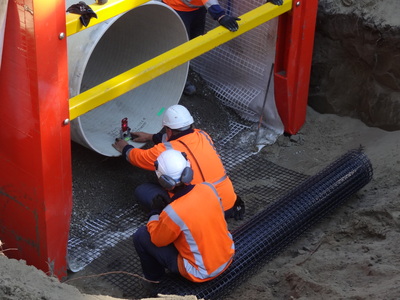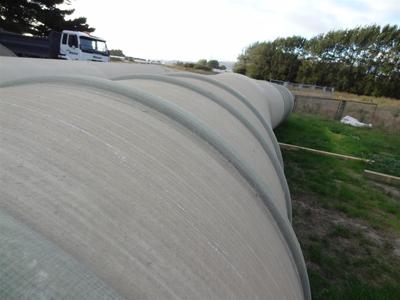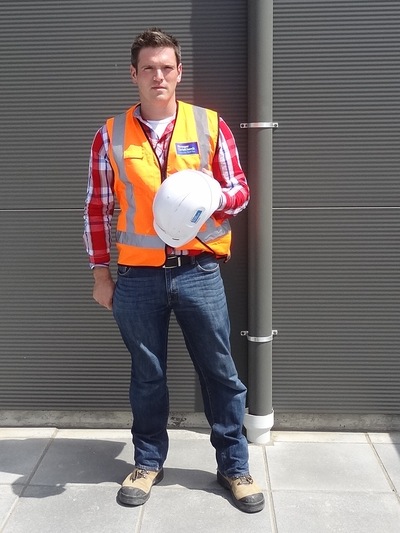Designing a stronger Christchurch
Tuesday, 05 March, 2013
Upping sticks and moving from Belfast, Ireland, to New Zealand is a significant lifestyle change for anyone, but MWH Global water and wastewater engineer Chris Maguire* never thought it would bring him face to face with the challenge of helping to rebuild an earthquake-torn city.
Within a year of his arrival in New Zealand from Belfast, Chris Maguire had experienced two catastrophic earthquakes. The September 2010 earthquake measured 7.1 on the Richter scale and required the repair of public infrastructure, but the worst was yet to come. A quake of 6.3 magnitude struck 10 km from Christchurch in February 2011, causing 185 deaths and reportedly over NZ$15 billion worth of damage.
Following the initial disaster and emergency response phases, there was a need to look at the long-term recovery of public infrastructure. In July 2011, Maguire was seconded from MWH to join the rebuild with the Stronger Christchurch Infrastructure Rebuild Team (SCIRT).
SCIRT is an alliance between owner participants Canterbury Earthquake Recovery Authority, Christchurch City Council and New Zealand Transport Agency, and five non-owner participants (Delivery Teams) - City Care, Downer, Fletcher, Fulton Hogan and McConnell Dowell. The alliance was tasked with rebuilding the earthquake-damaged horizontal infrastructure including roads and the water, wastewater and stormwater networks. Rebuilding this infrastructure is likely to cost around NZ$2 billion and will take several years.
Maguire’s initial focus was on the Pressure Main 11 (PM11) project, which was the design of a 3.6 km long, 1.2 m diameter, glass reinforced plastic (GRP) wastewater pressure main through the east of Christchurch, sitting in liquefiable ground. This was needed as the previous pressure mains failed during the earthquake and were damaged beyond repair. “The opportunity to design one of the largest GRP wastewater pressure mains in the country and the ability to make a real difference, through engineering, fuelled me,” said Maguire.
The original Pressure Main 11 consisted of two 600 mm ductile iron pipes. These were paired with a concrete pressure main to allow for resilience in operation. With the iron pipes damaged in the earthquakes, it meant there was only one line to carry 30% of Christchurch’s wastewater from Pump Station 11 to the Christchurch Wastewater Treatment Plant. Therefore, there was a need for a quick delivery of the design for the new pressure main. Christchurch City Council requested the new pressure main be constructed from GRP as this material had performed well in the earthquakes on other wastewater lines.
Challenging conditions
“We found there were some challenges when designing the new pressure main, especially around the ground conditions. Although there has been a considerable amount of study of earthquakes and seismic stability of buildings and vertical structures, there were surprisingly few examples in New Zealand of the tested performance of underground pipelines in seismic conditions. Geotechnical investigations undertaken in the area of the proposed pipeline indicated that it was prone to liquefaction. Although a relatively new concept, the black sleech (soft estuarine quasi-thixotropic deposits) in Belfast can be comparable to liquefaction in poor soil strength and instability so the design could be transferable back home in Ireland,” said Maguire. Through extensive testing and using existing borehole logs, Maguire and the team soon built up good information about the existing ground conditions, which enabled them to understand the potential issues around resilience. Conventional design of flexible pipelines considers static ground conditions and soil strength, not liquefaction, where seismic events can mobilise the silts and sands.
“It was eye opening to discover the majority of flexible pipeline codes used around the world are based on an American research paper called ‘Modulus of soil reaction (‘E’) Values for buried flexible pipe’, Howard (1977),” said Maguire. “Also, research which looked at the strength of liquefaction was mainly based on aboveground ‘unconfined’ embankments and dams where the soil had more opportunity to move and relax. However, we were looking at underground pipelines which were confined, giving a larger factor of safety and greater confidence in the design principles we had established.”
Sharing the knowledge
As part of a knowledge-sharing initiative at SCIRT, international experts with experience of seismic effects on public infrastructure were invited to discuss potential solutions. These discussions included representatives from the Los Angeles Department of Water & Power (LADWP), Kobe City, Kyoto University and the University of Canterbury. “The opportunity to talk about issues around seismic design and resilience with those who have first-hand global experience was invaluable. Open, honest and robust discussion around our design gave me confidence in the methodology and principles we were adhering too. It also opened my eyes to the challenges that had been faced elsewhere; something which would become the new reality of pipeline design in New Zealand.”
Wrapping up the design
It was decided that a method of keeping the ovality of the pipeline was required. This meant using a geogrid and textile wrapping, similar to a gabion basket, that would resist horizontal and vertical deflection in the pipeline when the soil strength was reduced due to liquefaction. “In order to prove that this would work, we undertook a physical test of the methodology,” said Maguire.

Analysis of the testing results showed that the geogrid gabion-type trench resisted changes in ovality and resulted in a reduction of 30 to 40% in vertical deflection when compared to the geotextile and standard trench details. However, testing also revealed that even after three days of complete loss of side support, all three trench constructions showed less deflection than allowable limits. “This gave me great satisfaction that the design we had spent time perfecting would better withstand any future quakes,” said Maguire.
Our innovation also extended to the use of geogrid thrust blocks which help to strengthen the trench and minimise differential settlement. Previous concrete thrust blocks had been seen to cause cracking and pipe fracture in other places from settlement.
Christchurch City Council had previously used geogrid reinforced aggregate thrust blocks for GRP pipe outside Pump Station 11 and these had performed well in the quakes.
Using information from these previous thrust blocks and research gained from similar blocks used in Japan, a new design for geogrid reinforced aggregate thrust blocks was developed. This was designed using static analysis and finite element analysis. GRP ribs were also added to the bends to give added cohesion between the trench backfill and the geogrid thrust blocks. This provided extra safety against joint displacement due to thrust.

“Working in SCIRT is like working for the United Nations,” says Maguire. “Along with all the Kiwis, you have people from all over the world with years of combined knowledge from different projects, places, experiences and challenges.”
The high-performing team atmosphere created at SCIRT enables open and honest communication that leads to the delivery of projects like the new pressure main, says Maguire. “I have realised that no two people communicate in the same way. To be great engineers we need to engage with all people, in their own way. In order to innovate, we need to break down barriers to communication and challenge the norm.”

Researchers trial magnetic resin to remove PFAS
A magnetic resin invented at The University of Queensland will be trialled at wastewater...
A sustainable approach to increase wastewater recycling
Flinders University research is investigating improved effluent treatment and biosolids removal...
Inverell upgrades 30-year-old aeration system
The project entailed building a new tank at the Inverell Sewage Treatment Plant, to allow...










